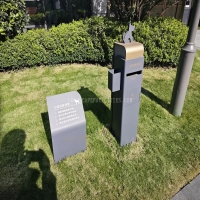Welcome to the website for landscape facilities products and knowledge.
How does the table’s surface texture impact writing or device usage?
When selecting a table for work or study, we often consider size, height, and material, but rarely pay attention to surface texture. This seemingly minor detail significantly impacts both writing comfort and electronic device performance.
For writing tasks, surface texture determines control and comfort. Excessively smooth surfaces like glass or high-gloss laminate can cause pens to slip, requiring more pressure to maintain control, leading to hand fatigue. The lack of friction makes precise pen movements challenging, particularly affecting calligraphy or detailed sketching. Conversely, moderately textured surfaces like unfinished wood or lightly brushed metal provide ideal resistance, allowing natural pen movement without excessive pressure. However, extremely rough textures like heavily grained wood or concrete can catch pen tips, cause ink skipping, and tear paper fibers.
The texture equally affects device usage. Smooth surfaces provide stable platforms for laptops and tablets, allowing easy sliding for repositioning. Yet this slipperiness becomes problematic for lightweight devices that may shift during typing. Textured surfaces offer superior grip, preventing devices from sliding, but can create uneven support potentially leading to device warping over time. Rough textures may scratch device bottoms and trap debris that abrades surfaces.
Mouse performance varies dramatically with texture. Optical and laser mice track inconsistently on glossy or transparent surfaces, while very rough textures can cause jerky cursor movement. The ideal mouse surface has minimal, consistent texture.
Material composition further complicates this relationship. A glass table might be too slick for writing but perfect for devices, while a rustic wood table could be ideal for writing but problematic for expensive electronics. The solution often lies in strategic accessories - writing mats can create ideal surfaces for pen work, while mouse pads provide reliable tracking surfaces.
Understanding these interactions helps create optimized workspaces. Writers and artists might prefer slightly textured surfaces, while digital workers might choose smoother finishes. The perfect table texture ultimately depends on your primary tasks, demonstrating that this overlooked characteristic deserves careful consideration in workspace design.
Related search:

Recommendation
Outdoor cat and dog feces trash can; Community pet trash can; Metal multi-color design